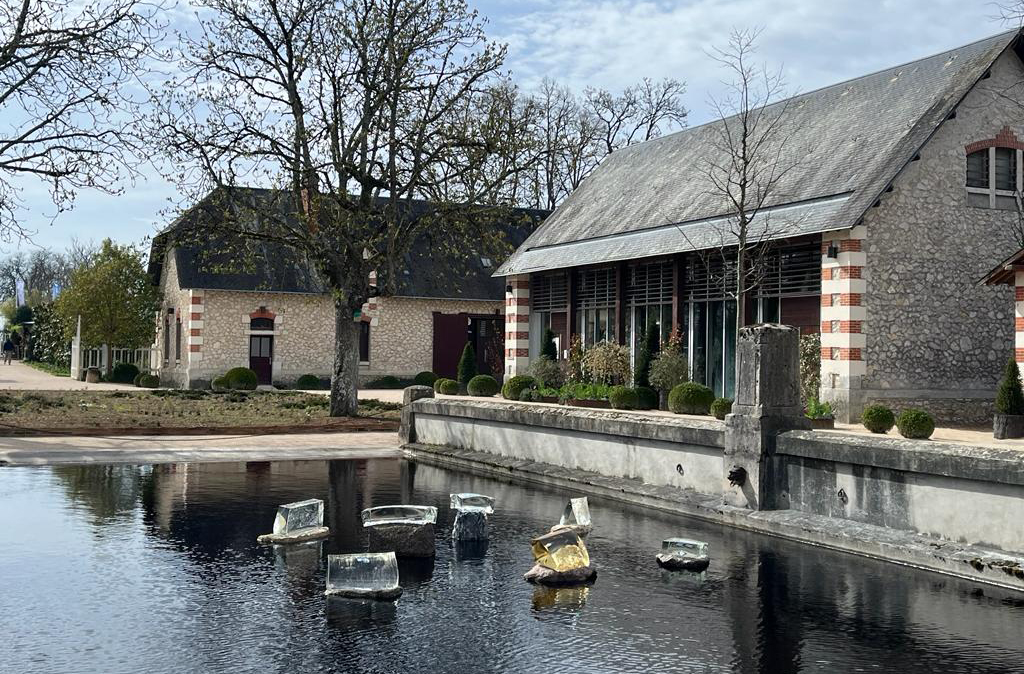Vladimir Zbynovsky at the Domaine de Chaumont-sur-Loire
April 1st - October 29th

Fifteen artists are set to share this new celebration of nature. Fifteen individuals each of whose pieces captures their work’s unique character. Inspired by mineral, vegetable, animal and anthropomorphic forms, drawings, paintings, sculptures and installations compose an innovative itinerary through such exhibition areas as the Historic Grounds, which is very much in the spotlight this year. This is how Chantal Colleu-Dumont, curator of the exhibitions, presents this new art season.
Light and time are key notions in Vladimir Zbynovsky’s artistic research. Through its physical principles, light prompts him to existential meditation that generates works bearing witness to the transformation of matter and awareness of human fugacity. His work has always pondered the nature of time and what drives it. Musings that naturally lead to reflection on the birth of matter; whence the desire to bring together two different materials that nonetheless both evoke the birth of the universe: stone and glass, medium of light.
In his early compositions, Vladimir Zbynovsky sought to uncover a passageway leading from one state to another. They were modelled in clay before being cast and moulded in glass. As a student at the School of Fine Arts in Bratislava, he learnt to consider and respect this material, used since the days of the Mesopotamian Empire and Ancient Egypt. With it, he had to do with an age-old practice that had adapted to geographies and the technical developments of successive societies. Although worked by light, his creations were academic, a term which he would later use to describe them.
It was then that a happy accident led Vladimir Zbynovsky down a side road. Looking in the kiln one day, he noticed a slight overflow of glass that spontaneously took on a shape of unexpected purity. Interested by this gif of chance, the artist saw it as an encouragement to more minimalist, more direct expression. This led to the creation of rectangular blocks of glass matched with stone. With the addition of glass, the stone sculpture developed a fourth dimension that challenged the artist, who pondered its nature. Did it fall within the realm of time or space? That was the question. The glass became a threshold, a portal, a passageway, resulting from a transformation.
“How do you confront the blinding proximity of reality? Vladimir Zbynovsky provides us with sculptures in which stone and glass embody the constant tension underlying this contemporary question to the highest artistic degree. The sculptor’s approach consists of using optical glass to illuminate the stone with immediate clarity, and, by doing so – in the wake of centuries of scientific investigations – enable knowledge of matter, the phenomenon of light, and a certain horizon of the world that we see taking shape in such artworks...,” the poet Chantal Golovine asserts.
Obtained by fusing silica sand with sodium carbonate or potassium, glass, so to speak, is a mutation of rock, a movement of the stone material, which can now gorge itself on light. Vladimir Zbynovsky exults in the idea of working with the tangible and intangible at the same time, of having the impression that he’s touching upon other spatialities. In his eyes, glass is not a tranquil material. It is the result of an action of fixation. Wherever men build permanent structures to mark their time on earth, to stay on beyond their own finitude, Vladimir Zbynovsky comes with his glass to meditate on the fragility of human beings and his ever unquenchable desire to hold back time. He uses the material with growing awareness, refining forms and learning patience in order to hit upon simplicity, the essential.
His evocatively titled works reveal a search for matter that borders on the spiritual. They remind us that the universe has a life of its own, unaffected by the appearance or disappearance of humankind, that life is a much greater principle than what we have reduced it to, and that light is an incomparable vital energy. So the artist uses all the subterfuges of his art to transform his sculptures into passageways from one dimension to another, so many altars linking the terrestrial world to a hereafter. Hence, nobody should be surprised to see the creation of a new altar at the Saint-Denis Basilica entrusted to him. Light calls upon light.
Vladimir Zbynovsky, permanent artist of the gallery since 2017, is among the artists exhibited for this new edition. Find his stone and glass artworks in the Farmyard Foothbath
For more information, please visit the website of the Domaine de Chaumont-sur-Loire by following this link.

© Domaine de Chaumont-sur-Loire